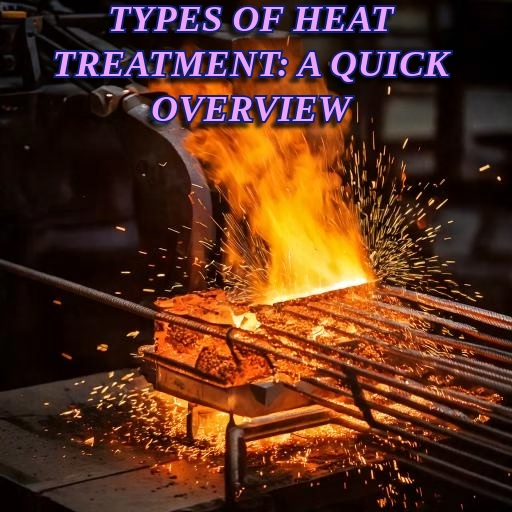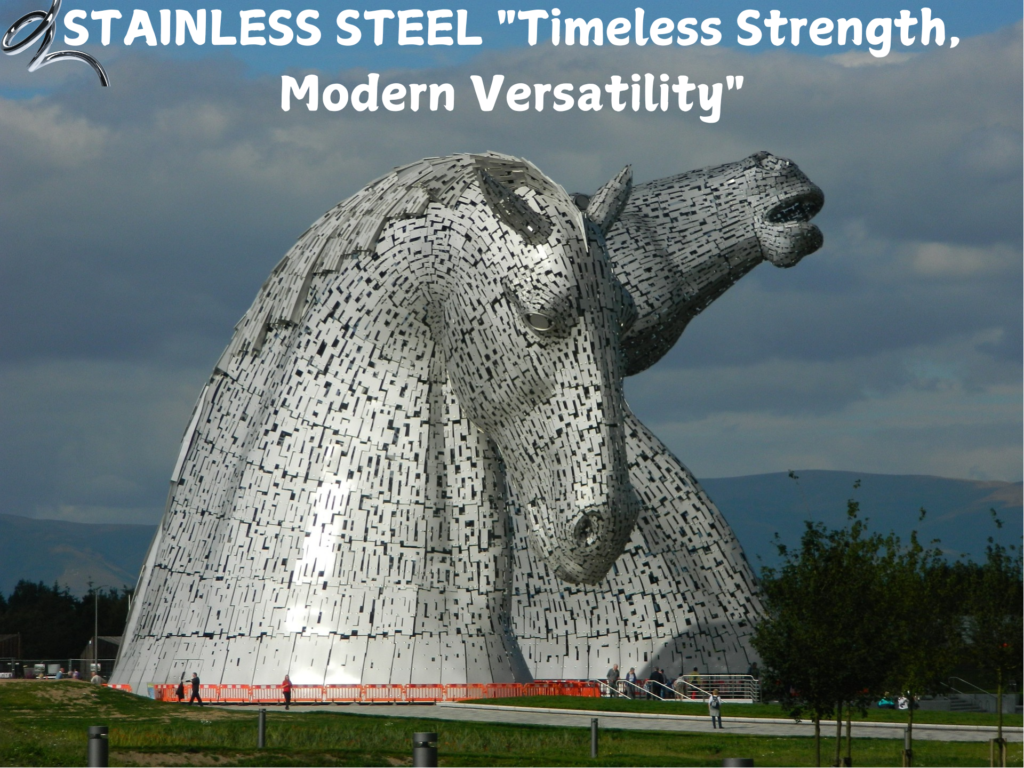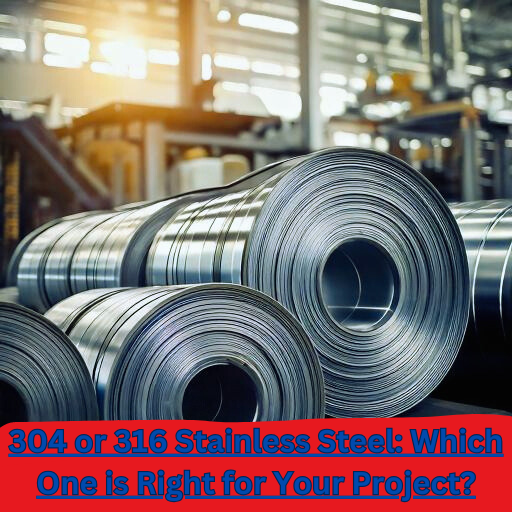The heat treatment of steel is a process in which its properties are altered by heating the steel to definite temperatures and then cooling it at a controlled rate. The heat treatment can be used to improve strength, hardness, ductility, and toughness of the steel. Each process has its own distinct purpose and is selected according to the requirement of the steel.
Now, let us understand in detail the different types of heat treatment on steel and their use.
1. Annealing Heat Treatment
Annealing is the heat treatment applied to soften the steel and enhance ductility. It works on relieving internal stresses as well. During this process, the temperature of the steel is raised to a very high level followed by its cooling in a controlled manner. The annealing of the grain structure refines the machinability and workability of the metal. It makes hard and brittle materials soft and machinable.
This process increases the capacity of the material to bend and shape. It refines the microstructure of the material and increases its properties and improves the electrical conductivity of materials such as copper and aluminium.
How does the annealing process take place?
The annealing process is generally carried out in three stages:
Recovery Stage: The metal is slowly heated to release internal stresses. These internal stresses are built up during machining or cold working.
Recrystallization Stage: n this stage, the temperature of the metal is increased to the recrystallization point. The old, deformed grains are replaced by new grains, and the metal becomes softer and more ductile.
Grain Growth Stage: The material is cooled to room temperature through controlled cooling. It is usually done within the furnace itself in order to provide a slow and controlled cooling.
Where is annealing used?
The annealing process is used in different industries:
Sheet Metal Industry: Annealing is done to make sheet metals and wires ductile so that they can be easily shaped.
Automobile Industry: To make steel and aluminum parts softer and stress-free.
Tool Manufacturing: Annealing is done to make hard steel soft and machinable before making tools.
Electrical Components: Annealing of copper and aluminum conductors improves their performance and conductivity.
Types of Annealing Process
There are several types of annealing, which are used according to specific requirements:
Full Annealing:
High-temperature annealing process used for structural components.
Stress Relief Annealing:
To remove internal stresses from machined or welded parts.
Process Annealing:
To restore ductility of cold worked materials such as wires and sheets.
Spheroidizing Annealing:
To make high-carbon steel machinable.
2. Normalizing Heat Treatment
What is Normalize Heat Treatment Process?
Normalizing may be defined as the heat treatment process for improving mechanical properties of steels and other metals. The process entails heating of the metal to a certain temperature and then cooling in the air.
This process refines the grain structure of the steel, reduces internal stresses, and relieves residual stresses built up after welding, machining, or forging. It increases the strength and toughness of the material. Normalizing is often used in industrial applications where uniform mechanical properties are required. The normalizing process makes the material easy and effective for machining. If the material needs some complex heat treatment then it is prepared for it.
How does the normalization process take place?
Heating: Metals are heated beyond the critical temperature range (austenite region), i.e. the critical temperature of steel is approximately 724°C. This temperature is usually 30-50°C higher than the transformation temperature.
Soaking: The steel is kept at the same temperature for some time so that the entire material gets heated uniformly and the grain structure can transform.
Cooling: The metal is allowed to cool naturally in open air after heating. The grain structure of the metal is refined through this controlled cooling.
Applications of Normalizing
Normalizing has been applied in several fields where uniformity and durability are crucial:
Building Construction: Beams, angles and structural components are normalized to enhance their strength.
Automotive Industry: To achieve high toughness and wear resistance in components like gears, shafts and axles.
Machinery Components: To enhance the properties of forged and casted parts.
Pressure Vessels and Pipelines: To acquire uniform strength and internal stress removal.
Normalizing vs. Annealing
Both processes are equivalent to heat treatment, but they have some important differences:
| Parameter | Normalizing | Annealing |
| Cooling Method | Air cooling | Furnace cooling |
| Purpose | Enhance Toughness & strength | Enhance Softness & ductility |
| Grain Structure | Refined & uniform | Coarse & soft |
| Applications | High strength required | High machinability required |
Advantages of Normalizing
The normalizing process is inexpensive and easy to perform. It enhances the mechanical properties of steels uniformly. It also serves as an efficient method for the removal of residual stresses. It enhances the machinability as well as the weldability of the material.
3. Hardening Heat Treatment
What is Hardening Heat Treatment Process?
Hardening is a heat treatment process used to increase the strength and hardness of steel and other metals. In this process, the metal is heated to a high temperature and then rapidly cooled, which changes the internal structure of the material and increases the hardness.
The hardening process increases the surface hardness of steel or other metals, which improves wear resistance. The metal becomes more durable and stress-resisting, meaning the strength of the metals increases and the wear resistance is also greatly increased, which protects against abrasion and surface damage.
Hardening is an advanced process that increases the strength and usability of metals in a great manner. This is an important process in the steel industry that finds its application in all kinds of high-performance applications.
How Does the Hardening Process Work?
Heating (Austenitization):
The metal is heated to a certain high temperature, which in the case of steel can be 800 to 900°C, that is above its critical temperature. In this step, the inner structure of the steel transforms to austenite.
Quenching (Rapid Cooling):
After heating, the metal is quenched in a quenching medium, like water, oil, or air, at a rapid cooling rate. In this process, the structure of the steel transforms into martensite, which is a hard brittle phase.
Tempering (Optional):
It is optional which is performed after quenching, in case ductility besides hardness is also needed, tempering is carried out. Here the material is re-heated to a middle level of temperature and allowed to cool a bit and this will bring down brittleness and raises the toughness
Applications of Hardening
The process of hardening is utilized when the parts require high stress and abrasion like:
Cutting Tools: The drill bits, saw blades and all machine tools
Gears: High strength gear and shaft.
Automotive Parts: Engine parts including crankshafts and camshafts.
Industrial Equipment: Punches, dies, and molds.
Important Points to Consider
Material Selection: Hardening is effective only for specific carbon or alloy steels.
Quenching Medium: Selection of suitable quenching medium depends on the properties of the metal. For example, water, brine or salt water is used as quenching medium for carbon steel.
Post-Treatment: Without tempering, hardened metal may become brittle, which increases the risk of fatigue failure.
4. Tempering Heat Treatment
What is Tempering Heat Treatment Process?
Tempering is a heat treatment process used to improve the ductility and toughness of brittle steel or metals. This process is used if the metal has been subjected to hardening heat treatment and its ductility has improved. After quenching, it is heated to a moderate temperature and then allowed to cool gradually. This process reduces the brittleness of the hardened metals and makes them more durable.
Tempering makes metals more impact resistant and helps to remove internal stresses, which ensure dimensional stability. Tempering makes metals more flexible and formable, which is important for the machinability of metals and reduces the risk of fracture significantly since brittleness of metals is reduced significantly.
Low temperature tempering releases only internal stress but majority of hardness remains the same. Higher temperature tempering causes greater reduction in hardness but results in slight reduction in tensile and yield strength.
How does the tempering process work?
Heating:
Hardened metals are heated within a controlled temperature range which can be from 150°C to 650°C. While quenched steel is heated from 66°C to 148°C, welded steel is heated from 205°C to 343°C. Temperature selection depends on the required mechanical properties.
Holding:
The metal is held at this temperature for a period of time to release internal stresses and develop a uniform microstructure.
Cooling:
The metal is allowed to cool slowly in air. This gradual cooling improves toughness and ductility, and reduces brittleness.
Applications of Tempering
Tempering is required for components which operate under high stress and impact conditions. Common applications are:
Automotive Parts: Makes gears, shafts, and crankshafts tough and reliable.
Cutting Tools: The tempering of drill bits, chisels, and blades removes brittleness.
Springs: It preserves elasticity and strength.
Industrial Machinery: Tempering makes punches, dies, and molds highly performing and tough.
Important Points to Consider
Temperature Selection: Higher tempering temperatures increase ductility but may decrease hardness slightly.
Material Compatibility: Tempering is only effective for hardened metals like high-carbon steel and alloy steel.
Post-Processing: Parts that have been tempered may require some polishing or coating to enhance the surface finish and protect against corrosion.5. Quenching Heat Treatment.
5. Quenching Heat Treatment
What is Quenching Heat Treatment Process?
Quenching is a heat treatment process used to increase the hardness and toughness of the metal. In this process, metal or steel is heated to a high temperature and then cooled rapidly. In materials science, rapid cooling is called quenching. Quenching mediums vary depending on the material although the most common mediums are water, oil, or air. Rapid cooling causes the internal structure of metals to convert into martensite which is very hard and strong.
It is used to increase the hardness of the surface and core of the metal. Quenching and hardening heat treatments are almost the same. The quenching process greatly increases the wear and tear resistance of metals. Increasing the overall strength of the metal makes it suitable for demanding applications.
Different mediums are used for quenching and each medium has its own effect. Water is used for the most rapid cooling where maximum hardness is required but there is a possibility of small cracks and distortions. When you need a little less hardness oil is used as its cooling rate is less as compared to water. Air medium has the lowest cooling rate and air is used when you need controlled hardness. Brine or salt water medium is used for uniform cooling but there is a greater risk of corrosion.
How does the quenching process work?
Heating (Austenitization):
The metal is heated to a specific high temperature, which is above the critical transformation temperature. Most materials are heated between 800°C and 900°C and a lot of attention is required to ensure uniform heating of the entire workpiece. In this step the internal structure of the steel changes to austenite.
Quenching (Rapid Cooling):
After heating the metal is immersed in a quenching medium. Rapid cooling converts the austenite to martensite, which is a hard and brittle phase. When you use water a layer of water vapor is formed between the metal and the workpiece this is called the Leidenfrost effect. When the temperature drops, the water makes full contact with the workpiece and then cooling occurs more quickly.
Post-Quenching Treatment (Optional):
After quenching, if more toughness or ductility is desired, the metal is passed through a tempering process, which reduces brittleness and makes the material durable.
6. Case Hardening Heat Treatment
What is Case Hardening Heat Treatment Process?
Case hardening is also known as surface hardening. This is a heat treatment process which makes the outer surface hard and wear resistant, while the inner core remains ductile. This process is mostly used for low carbon steel. Although this heat treatment is ideal for applications where the surface of the metal needs to have high wear and friction resistance, but the core needs to remain tough and ductile to absorb impact.
Case hardening enhances the properties of the cheapest cost steel such as low carbon steel, the process can be customized to suit the required depth and hardness.
In this, both carbon steel and alloy steel are suitable for the case hardening process, but mild steel is not very hard because it has very low carbon percentage. For this, low-carbon steel is heated in a carbon-rich environment. This causes the carbon atoms to diffuse into the surface of the steel, forming a hard outer layer. Steels with carbon greater than 0.25% are heated to a high temperature (around 600°C) and then rapidly cooled (using a quenching process). This step makes the surface hard and strong.
Types of Case Hardening Processes
Carburizing: Steel is heated in a carbon-rich medium, such as solid (charcoal), liquid (cyanide salts), or gas (methane). Carbon atoms diffuse into the surface and form a hard outer layer.
Nitriding: Steel is heated in a nitrogen-rich environment. This forms nitride compounds on the surface that are hard and wear-resistant.
Cyaniding: Metal is heated by dipping it in a bath of cyanide salts. Efficient for rapid hardening, but rarely used due to environmental concerns.
Induction Hardening: Metal surface is heated by electromagnetic induction and then quenched. Localized hardening is possible with this process.
Applications of Case Hardening
Case hardening is important for components that face high surface wear and impact stress. Common applications are:
Gears and Shafts: for hard surfaces and tough cores.
Camshafts and Crankshafts: for increased durability in the automotive industry.
Fasteners: makes bolts and nuts wear-resistant.
Tools and Dies: for high-performance and long-lasting tools.
Important Points to Consider
- Material Selection: ideal for low-carbon steel and alloy steels.
- Environmental Concerns: Processes such as cyaniding are not environment-friendly, so it is better to use alternatives.
- Controlled Depth: Hardening depth depends on process and time, so accurate control is important.
Conclusion
Heat treatment is a vital process that helps customize the properties of steel. Whether you require your steel material to be softer (annealing) or harder and wear-resistant (hardening), there is a specific heat treatment process available for each application. Selection of the correct process depends on the requirement of your application and the grade of steel.
Heat treatment techniques can dramatically enhance the life and performance of steel, so they are used widely in industries.




Pingback: TMT 500 STEEL BARS:- WHY WE USE IT IN CONSTRUCTION
Pingback: SEAMLESS STEEL PIPES:- A DETAILED GUIDE
Pingback: STAINLESS STEEL FLAT AND ROUND BAR:- GRADE WISE APPLICTIONS